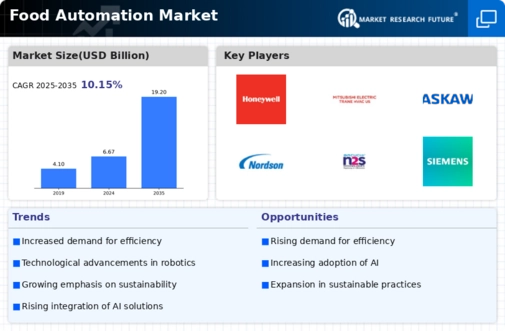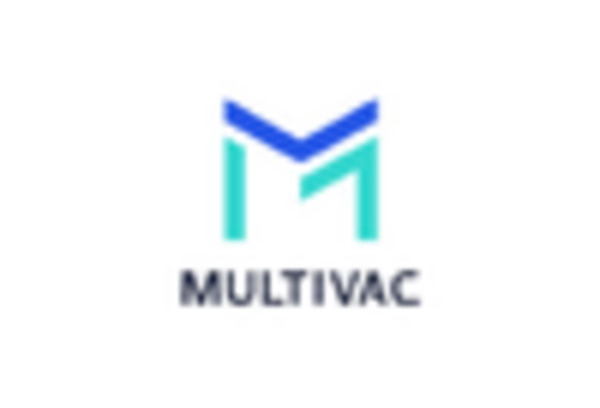The Food Automation Market is currently characterized by a dynamic competitive landscape, driven by technological advancements and increasing demand for efficiency in food production processes. Key players such as Marel (Iceland), JBT Corporation (United States), and Bühler Group (Switzerland) are at the forefront, each adopting distinct strategies to enhance their market positioning. Marel (Iceland) focuses on innovation through the development of integrated food processing solutions, while JBT Corporation (United States) emphasizes strategic acquisitions to expand its product offerings and market reach. Bühler Group (Switzerland) is heavily investing in digital transformation initiatives, aiming to optimize food production through data analytics and automation technologies. Collectively, these strategies not only enhance operational efficiencies but also intensify competition within the market, as companies strive to meet evolving consumer demands and regulatory standards.
In terms of business tactics, companies are increasingly localizing manufacturing to reduce lead times and enhance supply chain resilience. This approach is particularly evident in the Food Automation Market, which is moderately fragmented, with several players vying for market share. The collective influence of these key players shapes a competitive structure that encourages innovation and collaboration, as companies seek to differentiate themselves through unique value propositions and technological advancements.
In August 2025, JBT Corporation (United States) announced the acquisition of a leading software firm specializing in AI-driven food processing solutions. This strategic move is poised to enhance JBT's capabilities in automating food production processes, thereby improving efficiency and reducing operational costs. The integration of AI technology is likely to position JBT as a leader in the market, enabling it to offer more sophisticated solutions to its clients.
In September 2025, Bühler Group (Switzerland) launched a new line of automated food processing equipment designed to minimize waste and enhance sustainability. This initiative aligns with the growing consumer demand for environmentally friendly practices in food production. By prioritizing sustainability, Bühler not only addresses regulatory pressures but also appeals to a broader customer base that values eco-conscious solutions.
In October 2025, Marel (Iceland) unveiled a partnership with a prominent tech firm to develop next-generation food processing systems that leverage IoT technology. This collaboration aims to create smarter, more connected food production environments, allowing for real-time monitoring and optimization of processes. Such advancements are likely to redefine operational standards in the industry, setting Marel apart as a pioneer in the integration of technology and food automation.
As of October 2025, the Food Automation Market is witnessing a pronounced shift towards digitalization, sustainability, and AI integration. These trends are reshaping competitive dynamics, as companies increasingly form strategic alliances to enhance their technological capabilities and market reach. The focus is shifting from traditional price-based competition to a landscape where innovation, technology, and supply chain reliability are paramount. This evolution suggests that future competitive differentiation will hinge on the ability to adapt to these trends, fostering a more resilient and responsive food automation ecosystem.


















Leave a Comment